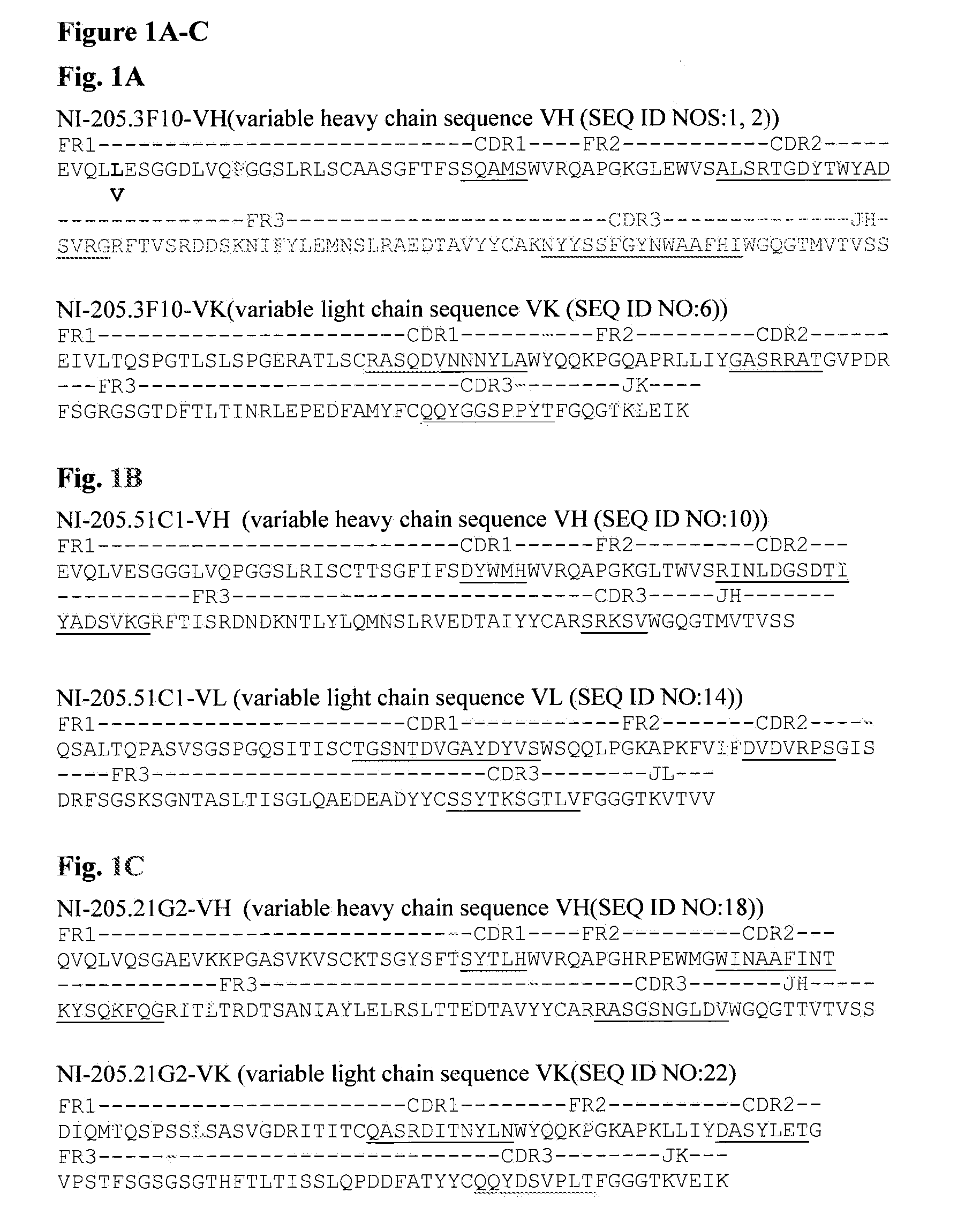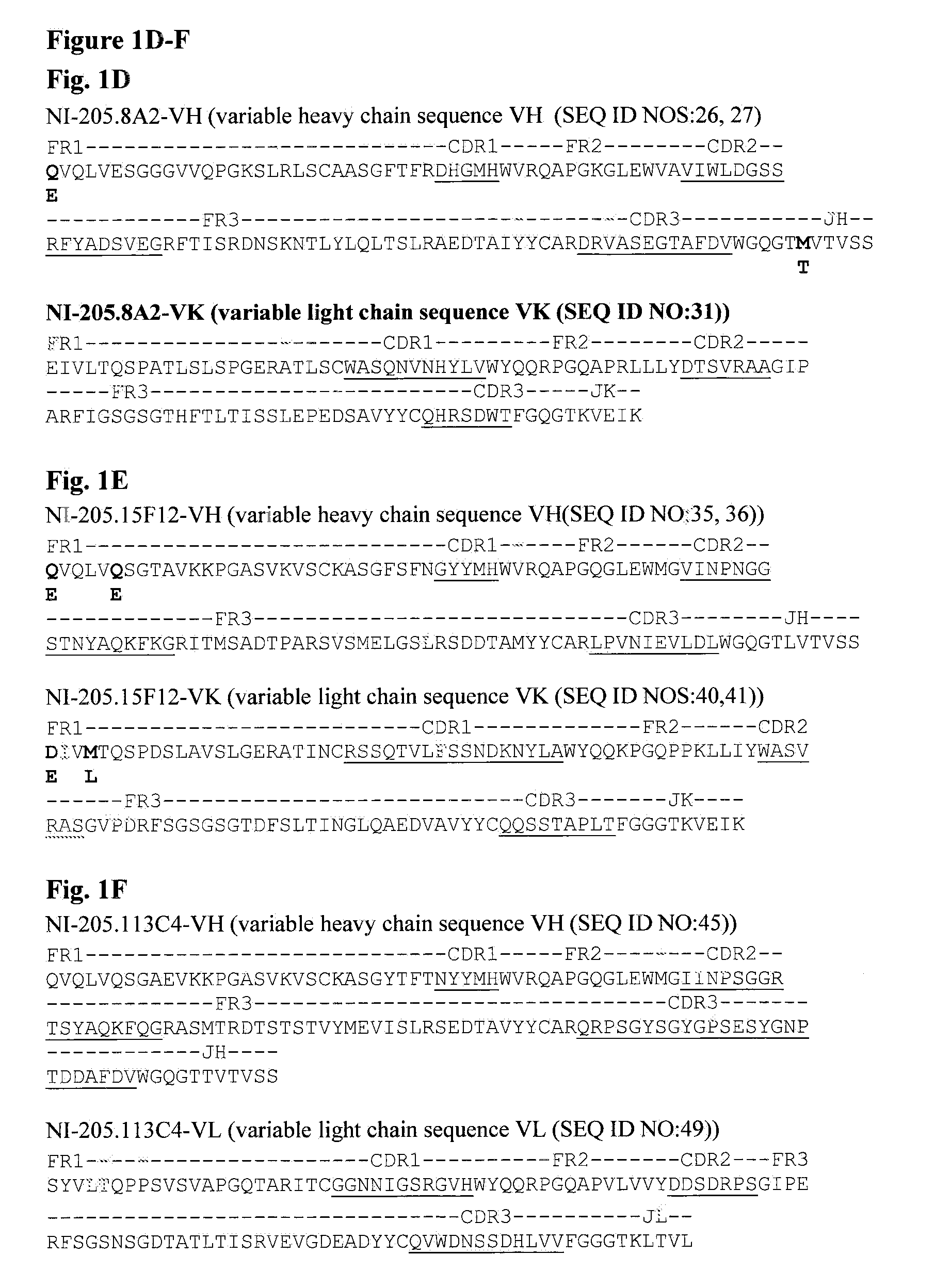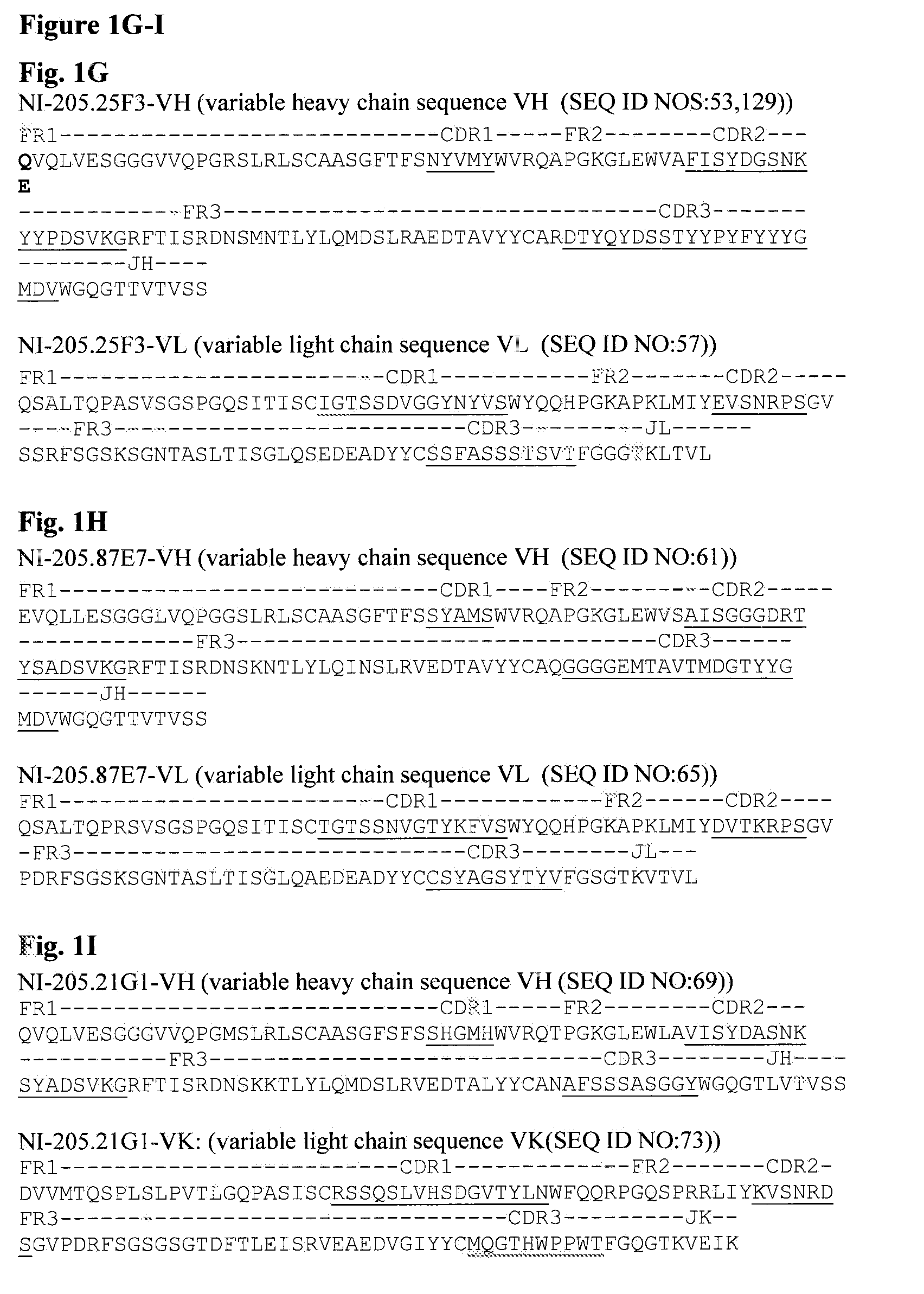Tdp-43 specific binding molecules
a molecule and specific technology, applied in the field of tdp43, can solve the problems of genetically engineered antibodies showing undetected cross-reactivity with other proteins and/or the target protein, affecting the therapeutic utility of murine based antibodies in humans, and inconvenient production of antibodies, etc., to achieve the effect of treating or preventing tdp-43 neurologic proteinopathies
- Summary
- Abstract
- Description
- Claims
- Application Information
AI Technical Summary
Benefits of technology
Problems solved by technology
Method used
Image
Examples
example 1
Human TDP-43 Antibody Binding Analysis by ELISA and Western Blotting
Direct ELISAs
[0305]96 well microplates (Corning) were coated with polypeptides comprising TDP-43 amino acid residues 2-106 of SEQ ID NO:94 (TDP-43 domain I), residues 99-204 of SEQ ID NO:94 (TDP-43 domain 11), residues 183-273 of SEQ ID NO:94 (TDP-43 domain III), residues 258-414 of SEQ ID NO:94 (TDP-43 domain IV), residues 2-414 of SEQ ID NO:94 (full-length TDP-43) and a synthetic polypeptide containing residues 390-414 with phosphorylation modification at residues 409 / 410 of SEQ ID NO:94. The polypeptides were coated onto ELISA plates at equal coating concentration of 6.6 μg / ml (recombinant TDP-43 and TDP-43 fragments) or 3.3 ml (synthetic peptides). Binding of the human-derived antibodies was determined by direct ELISA.
[0306]Antibodies NI-205.51C1 (FIG. 2A) and NI-205.3F10 (FIG. 2C) bound specifically to TDP-43 domain III (amino Kid residues 183-273 of SEQ ID NO:94). Antibodies NI-205.8A2 (FIG. 2D), NI-205.15F12 ...
example 2
EC50 Determination for Human TDP-43 Binding Antibodies
Determination of Half Maximal Effective Concentration (EC50)
[0309]To determine the half maximal effective concentration (EC50) of the human-derived TDP-43-specific antibodies for human TDP-43 and to evaluate target-specificity, 96 well microplates (Corning) were coated with recombinant full length TDP-43 (Biogen Idec, USA), Escherichia coli extract and BSA (Sigma, Buchs, Switzerland), diluted to a concentration of 5 μg / ml in carbonate ELISA coating buffer (pH 9.6) overnight at 4° C. Alternatively, 96 well half area microplates (Corning) were coated with a synthetic peptide covering residues 390 to 414 of the C-terminal domain of TDP-43 with phosphorylation modification at residues 409 / 410 (Schafer-N, DK) and BSA (Sigma, Buchs, Switzerland), diluted to a concentration of 3.3 μg / ml in carbonate ELISA coating buffer (pH 9.6) overnight at 4° C. Non-specific binding sites were blocked for 1 hr. at room temperature with PBS containing ...
example 3
Epitope Mapping with Synthetic Peptides (PepSpotting)
[0311]Scans of overlapping peptides were used to map the epitopes within the human TDP-43 protein that are recognized by the human-derived. TDP-43 specific antibodies. Pepscan membranes (PepSpots, JPT Peptide Technologies, Berlin, Germany) with 101 linear 15mer peptides of 11 amino acid overlapping sequences that collectively represent the entire sequence of human TDP-43 (Q13148, TARDBP_HUMAN). The peptides were spotted onto nitrocellulose membranes that were then activated for 5 min, in methanol and subsequently washed at room temperature in TBS for 10 min. Non-specific binding sites were blocked for 2 hours at room temperature with Roti®-Block (Carl Roth GmbH Co. KG, Karlsruhe, Germany). Human-derived TDP-43 specific antibodies (1 μg / ml) were incubated for 3 hours at room temperature in Roti®-Block. Binding of primary antibody was determined using HRP conjugated donkey-anti human IgGγ-specific secondary antibody (Jackson ImmunoR...
PUM
| Property | Measurement | Unit |
|---|---|---|
| Fraction | aaaaa | aaaaa |
| Fraction | aaaaa | aaaaa |
| Fraction | aaaaa | aaaaa |
Abstract
Description
Claims
Application Information
 Login to View More
Login to View More - R&D
- Intellectual Property
- Life Sciences
- Materials
- Tech Scout
- Unparalleled Data Quality
- Higher Quality Content
- 60% Fewer Hallucinations
Browse by: Latest US Patents, China's latest patents, Technical Efficacy Thesaurus, Application Domain, Technology Topic, Popular Technical Reports.
© 2025 PatSnap. All rights reserved.Legal|Privacy policy|Modern Slavery Act Transparency Statement|Sitemap|About US| Contact US: help@patsnap.com



